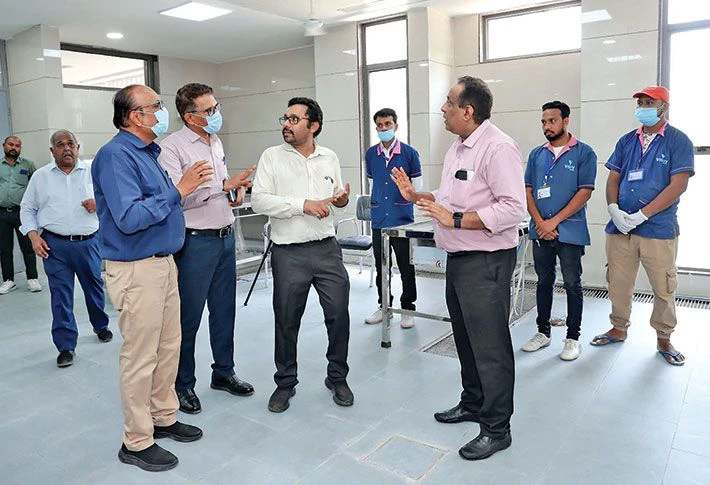Doctors at Civil Hospital stepped up as heroes following the Air India 171 plane crash on June 12. The medical team at Asia’s biggest hospital showed remarkable courage during the tragedy that claimed 260 lives.
This comes as the nation marks Doctors’ Day with the theme “Behind the Mask: Who Heals the Healers.”
Within minutes of the crash at BJ Medical College’s mess, Civil Hospital transformed into a war-like medical facility. Doctors, MBBS students, and residents worked tirelessly. They handled treatment, DNA matching, and ensured dignified body handovers to families. Amidst wailing family members and overwhelming uncertainty, medical professionals got to work like soldiers on the ground. Despite their personal fears, they pushed forward with determination.
A challenging surgery
Civil Hospital Superintendent Dr Rakesh Joshi described the following two weeks as their most challenging ever. “On June 12, I was performing a complex bladder atrophy surgery in the morning, which typically takes 6 to 8 hours,” he said. “The procedure was nearly complete when at 1.42 pm, the hospital security officer told me about the plane crash.”
“I was shaken right there in the theatre. But knowing how serious the situation was, I handed over the remaining work to my colleague and left immediately,” Dr Joshi added.
The medical response proved highly effective. Doctors and staff worked 18-20 hour days continuously. They completed post-mortems, DNA sampling and matching, documentation, body identification and handovers of about 260 bodies in just 14 days.
Immediate response
Dr Joshi quickly grasped the gravity of the situation. He instructed RMO Dr Jagdish Solanki to send specialists, residents, and nursing staff to the trauma centre. He directed Dr Badal Gandhi to supply necessary medicines while ensuring sufficient blood stocks.
He promptly called Prof Rajnish Patel, Dr Hitendra Desai, Dr Piyush Mittal, Dr Sanjay Kapadia and Dr Sanjay Solanki to the conference hall. Together, they prepared for immediate treatment.”Our anticipated challenge shifted completely within an hour,” he explained. “We expected many injured passengers from the crash. Instead, with barely any survivors, we received mostly bodies.”
“The Chief Minister, Health Minister, and Health Secretary rushed to the hospital after hearing the news. Relatives of passengers also arrived, followed by local police and state officials. Their presence helped us organise and begin our work,” Dr Joshi said.
Frightening scene
Dr Meenakshi Parikh, Dean of BJMC, recalled the terrifying atmosphere.
“The scene was frightening. We estimated high numbers of dead and injured,” she said. “Within two hours, we set up DNA profiling for relatives of the deceased in the college’s testing building.”
“Handling grieving relatives became crucial as days passed. The DNA matching, body handovers and counselling tested us severely, but teamwork pulled us through,” Dr Parikh added. Dr Sanjay Solanki worked on body handovers and medical records after setting up the new post-mortem room. He spoke about the emotional toll.
“After DNA matching, we had to hand over belongings and bodies to relatives,” he recalled. “Explaining documents for bodies going abroad while facing heartbroken, wailing families was devastating.”
On June 13, the team began placing bodies in the new post-mortem room and prepared for the handover process.
Many paramedics and resident doctors remain in shock weeks later. Their experience reflects this year’s Doctors’ Day theme: Who heals the healers?
I was shaken right there in the theatre. But knowing how serious the situation was, I handed over the remaining work to my colleague and left immediately
-Dr Rakesh Joshi
Med Superintendent, Civil
